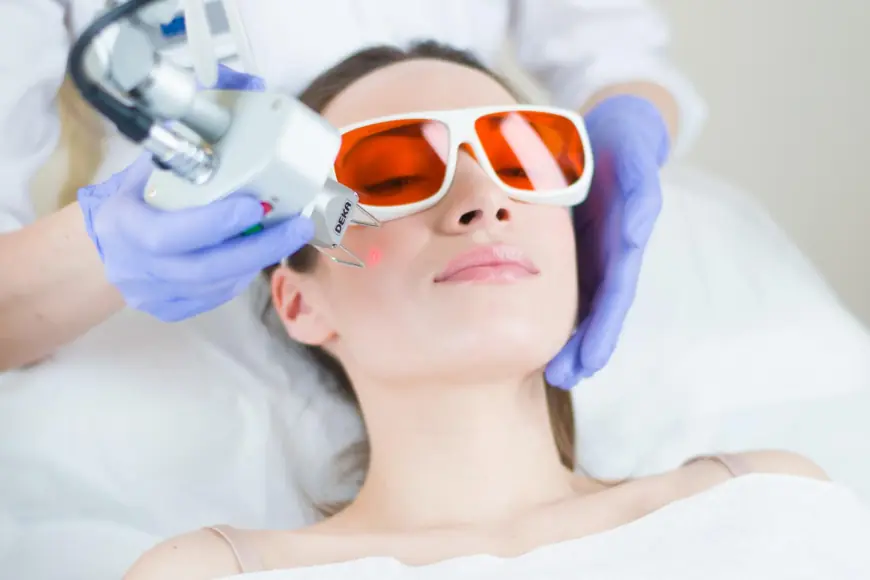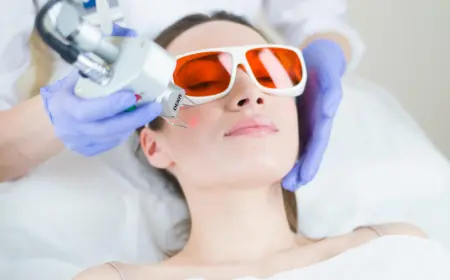Fractional Laser: How Many Sessions Do You Need?
The answer to this question depends on several factors, including the type of fractional laser used, the condition being treated,

Fractional laser treatments have become a popular option for addressing a variety of skin concerns, from acne scars and wrinkles to hyperpigmentation and sun damage. One of the key questions many people have before undergoing fractional laser therapy is: "How many sessions do I need to achieve optimal results?"
The answer to this question depends on several factors, including the type of fractional laser used, the condition being treated, your skin type, and the desired outcome. In this blog, we will explore the general guidelines for the number of sessions required for different skin concerns and types of fractional laser treatments.
What Is Fractional Laser?
Fractional laser فراكشنال ليزر technology uses laser energy to treat a fraction of the skin at a time, creating thousands of micro-injuries in the skin that stimulate the body's natural healing process. This process encourages collagen production, which can improve the texture and appearance of the skin.
Unlike traditional laser treatments that target the entire skin surface, fractional lasers leave surrounding skin intact, allowing for faster healing. This targeted approach is effective in treating various skin conditions, such as:
- Wrinkles and fine lines
- Acne scars
- Sun damage
- Hyperpigmentation
- Stretch marks
- Skin texture issues
While fractional lasers offer remarkable results, multiple sessions are often necessary to achieve the desired outcome, depending on the severity of the skin issue and the type of fractional laser used.
Factors Influencing the Number of Sessions
The number of fractional laser sessions needed to achieve the best results depends on several factors:
-
Skin Condition: The severity of the skin concern plays a major role in determining how many sessions are required. For example, superficial issues like mild pigmentation may only need one or two sessions, while deeper skin issues like acne scars or deep wrinkles might require more treatments.
-
Laser Type: Different fractional lasers (CO2, erbium, thulium, etc.) have varying levels of intensity and target different layers of the skin. More aggressive lasers like the CO2 laser might offer more dramatic results in fewer sessions, but they also require longer recovery times. In contrast, gentler lasers may require more sessions to achieve similar results but with minimal downtime.
-
Desired Outcome: If you're looking for subtle improvements, fewer sessions may be necessary. However, if you want dramatic skin rejuvenation, multiple sessions will likely be required. Some patients prefer to spread out their treatments over several months to avoid long recovery times and allow their skin to gradually heal and improve.
-
Skin Type: Your skin type and its ability to heal can influence the number of treatments required. People with darker skin tones may need fewer treatments or a gentler laser to reduce the risk of pigmentation issues. Likewise, individuals with sensitive skin may require more time between sessions to allow their skin to recover properly.
-
Age: Older skin tends to be less resilient and may require more sessions for effective collagen stimulation and rejuvenation. Younger skin with fewer signs of aging might require fewer treatments.
Typical Number of Sessions for Common Skin Concerns
Here’s a general guideline for the number of fractional laser sessions required for common skin concerns:
-
Acne Scars: Acne scars, especially deep pitted scars, typically require more treatments. Generally, 3 to 6 sessions are recommended, spaced about 4 to 6 weeks apart. The number of sessions will depend on the severity and depth of the scars, as well as the type of fractional laser used.
-
Fine Lines and Wrinkles: For mild to moderate wrinkles, 2 to 4 sessions may be sufficient to achieve noticeable results. Deeper wrinkles may require more treatments, and results will be more gradual, improving over time as collagen production increases. Sessions are typically spaced 4 to 6 weeks apart.
-
Hyperpigmentation and Sun Damage: Superficial pigmentation issues such as sunspots or age spots often require fewer sessions. Typically, 2 to 3 sessions spaced 4 to 6 weeks apart can lead to significant improvements in skin tone and the reduction of pigmentation.
-
Stretch Marks: Stretch marks are notoriously difficult to treat, but fractional lasers can help improve their appearance by stimulating collagen production. Most patients require 4 to 6 treatments for visible results, spaced 4 to 6 weeks apart.
-
Skin Texture and Tone: For general skin texture and tone improvements, including uneven skin surface or mild acne scars, 3 to 5 sessions may be necessary to achieve a smoother, more even complexion. The sessions are usually spaced 4 to 6 weeks apart.
How Long Between Sessions?
The time between fractional laser treatments varies depending on the type of laser used and the skin's healing process. For most fractional lasers, the typical recommendation is to space sessions 4 to 6 weeks apart. This allows your skin enough time to heal and regenerate collagen before the next treatment.
For more aggressive lasers, such as CO2, longer intervals between sessions (6 to 8 weeks) may be recommended to allow the skin to fully heal and avoid over-treating.
It’s essential to follow your practitioner’s guidelines for spacing treatments to prevent complications and achieve the best results.
Can You See Results After One Session?
While fractional laser treatments typically require multiple sessions for optimal results, many patients notice improvements after just one treatment. Results may include smoother skin, reduced pigmentation, and a more even skin tone. However, for more significant concerns like deep wrinkles or acne scars, multiple sessions are necessary to see noticeable changes.
The results of each session will become more evident as collagen production increases and the skin continues to heal. After completing your recommended course of treatments, you will likely see a visible transformation in the texture, tone, and overall appearance of your skin.
What Happens After Your Final Session?
After completing your series of fractional laser treatments, you will likely experience smoother, firmer, and more youthful-looking skin. The final results will continue to improve over the following weeks and months as collagen production stimulates the skin’s natural regeneration.
While the results of fractional laser treatments are long-lasting, they are not permanent. Over time, the skin continues to age and undergo environmental damage, so occasional maintenance sessions may be required to keep your skin looking its best.
Conclusion
The number of fractional laser sessions required varies depending on several factors, including the skin condition being treated, the type of laser used, and the desired outcome. In most cases, 3 to 6 sessions are required to achieve noticeable improvements, although results can be seen after just one treatment.
What's Your Reaction?
 Like
0
Like
0
 Dislike
0
Dislike
0
 Love
0
Love
0
 Funny
0
Funny
0
 Angry
0
Angry
0
 Sad
0
Sad
0
 Wow
0
Wow
0
























































